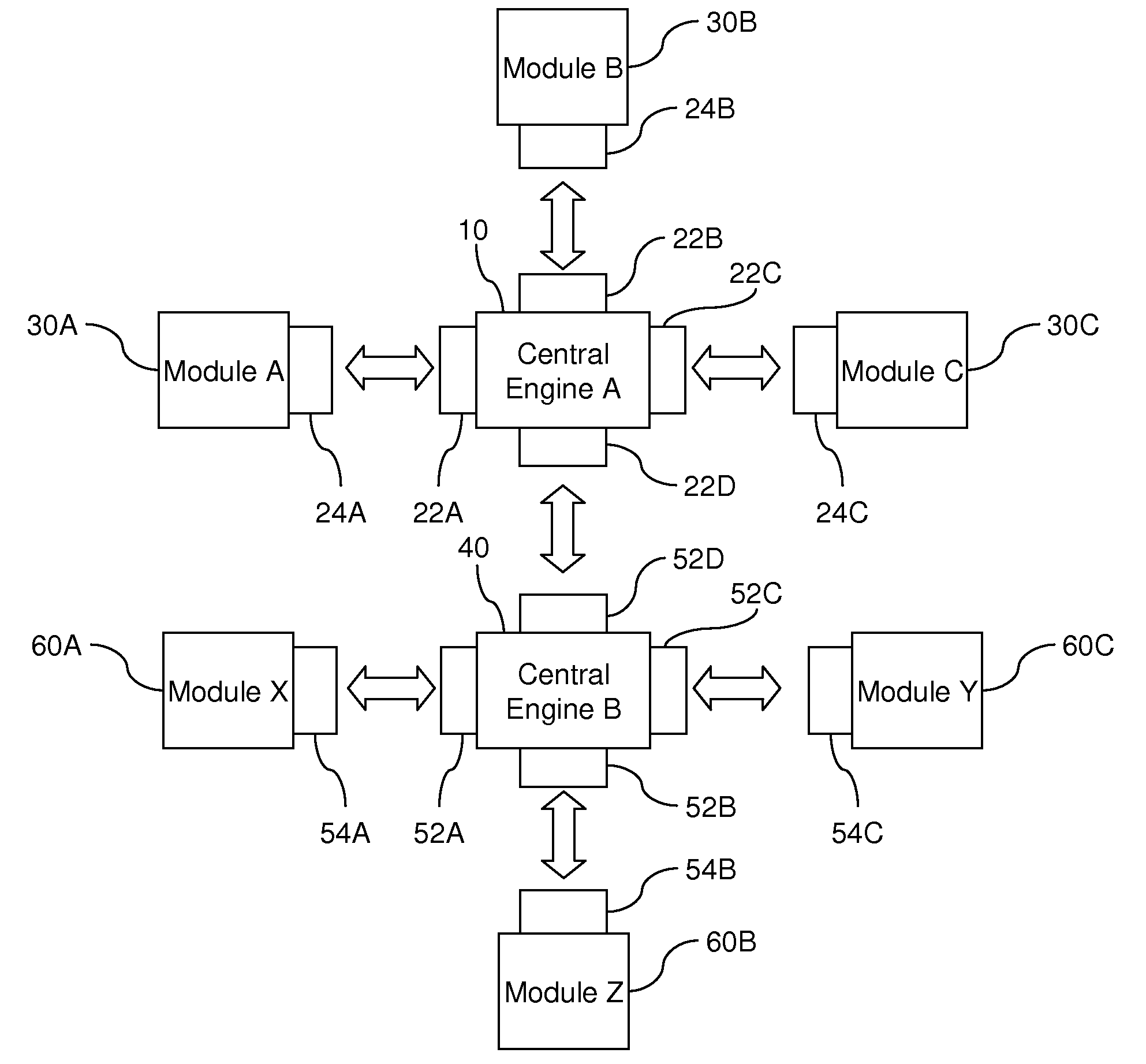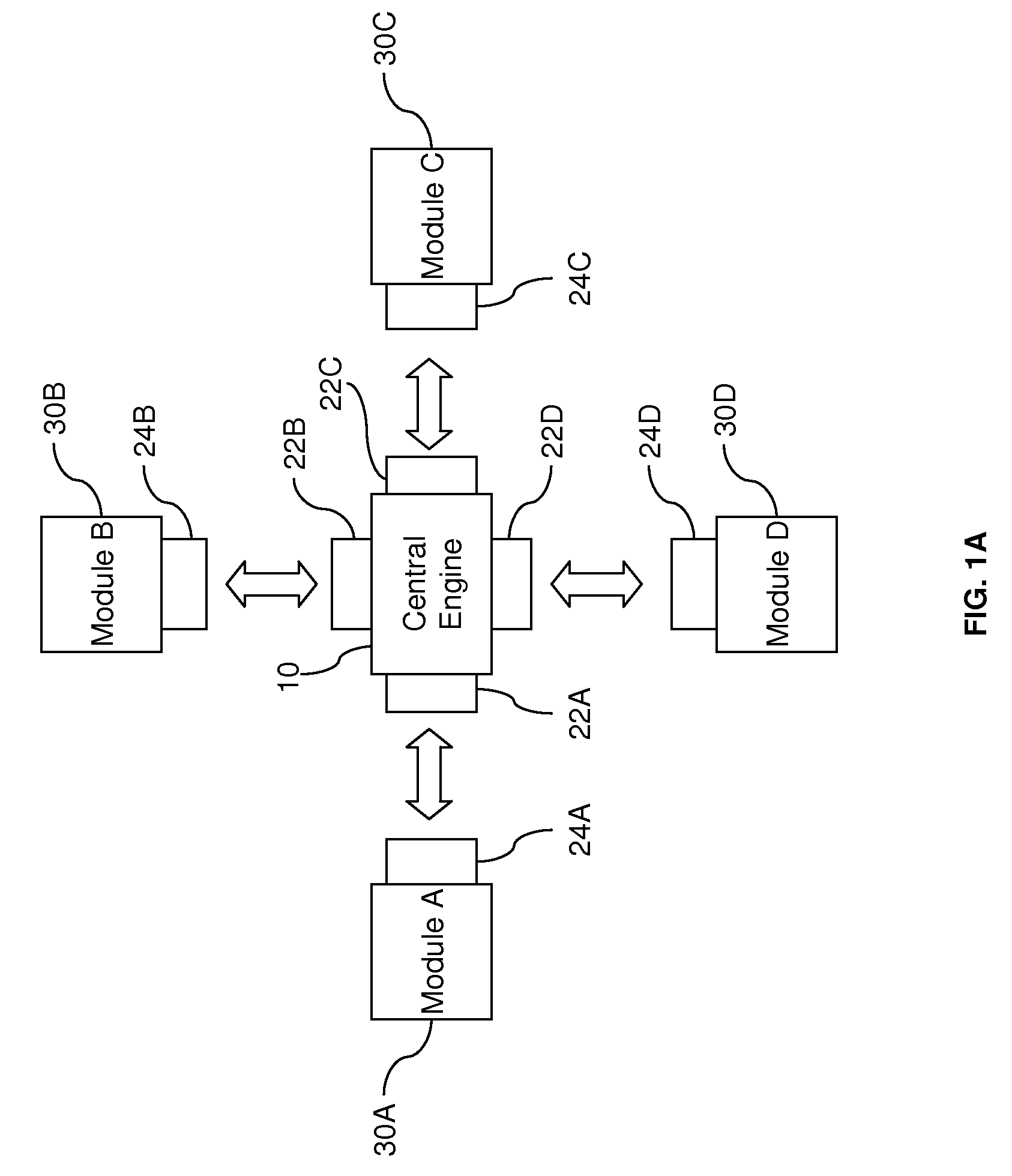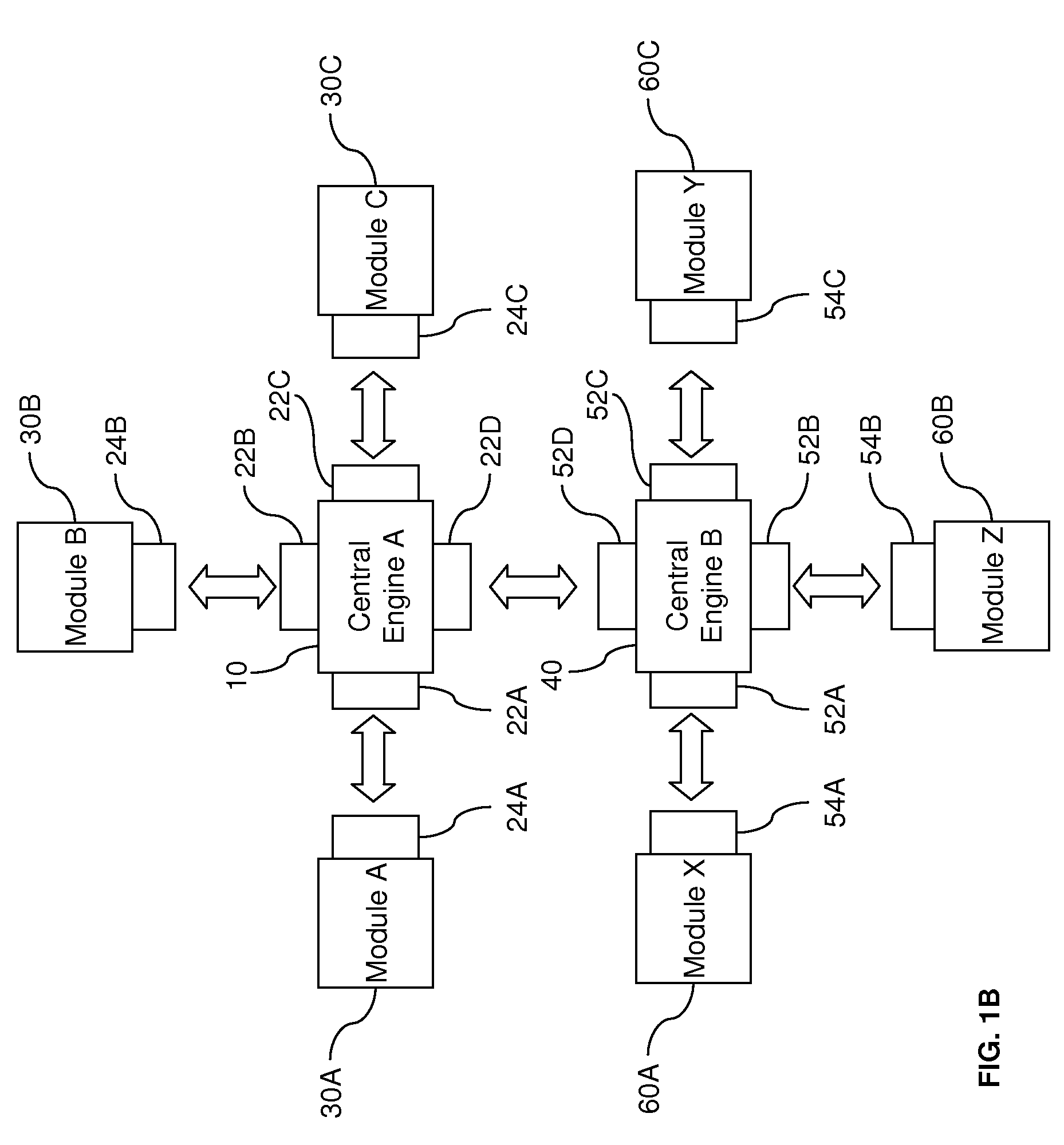Architecture for health monitoring systems
a technology of health monitoring and architecture, applied in the direction of local control/monitoring, diagnostic recording/measuring, instruments, etc., can solve the problems of slowed introduction of such systems into the marketplace, inability to allow each element to be developed independently and/or in parallel, and the development process requires more time, so as to facilitate connection, shorten the development cycle of a product, and facilitate the effect of introduction
- Summary
- Abstract
- Description
- Claims
- Application Information
AI Technical Summary
Benefits of technology
Problems solved by technology
Method used
Image
Examples
Embodiment Construction
[0027]The embodiments described herein provide a system architecture that allows individual system components, or modules, to be developed and validated independently (as distinct modules) and subsequently combined through standardized electrical and communication interfaces. The standardized interfaces facilitate the combination and configuration of these modules to form different products that provide any number of functions. While the architecture can be used to form a fixed combination of components, the approach also permits reconfigurable or expandable combinations where different components may be easily removed or added to the system. In addition, as described further below, the architecture provides an approach for dynamically updating the modules after they have been integrated into the product.
[0028]FIG. 1A illustrates a conceptual diagram of a modular architecture according to aspects of the present invention. As shown in FIG. 1A, a modular architecture system 1 includes...
PUM
 Login to View More
Login to View More Abstract
Description
Claims
Application Information
 Login to View More
Login to View More - R&D
- Intellectual Property
- Life Sciences
- Materials
- Tech Scout
- Unparalleled Data Quality
- Higher Quality Content
- 60% Fewer Hallucinations
Browse by: Latest US Patents, China's latest patents, Technical Efficacy Thesaurus, Application Domain, Technology Topic, Popular Technical Reports.
© 2025 PatSnap. All rights reserved.Legal|Privacy policy|Modern Slavery Act Transparency Statement|Sitemap|About US| Contact US: help@patsnap.com



